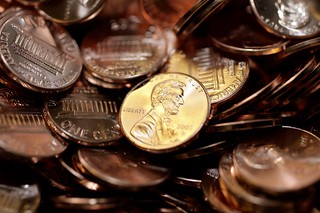
PREV ARTICLE
NEXT ARTICLE
FULL ISSUE
PREV FULL ISSUE
WILL THE PENNY SURVIVE CORONAVIRUS?Len Augsburger passed along this New York Times piece on the fate of the cent. Thanks. -Editor
During lockdowns, consumers have stayed home and avoided emptying their piggy banks of coins in exchange for paper money. Shoppers have also opted to rely on credit and debit cards instead of touching cash. With coins in short supply, the Federal Reserve formed a U.S. Coin Task Force, which will make recommendations on ways to cope with the shortage. The shortage has led to renewed discussions about the fate of the penny, which has seen its purchasing power fall because of inflation while its production costs have risen. Sunde White, a 46-year-old small-business owner in San Francisco, said the coin shortage was one more reason to retire the penny. “I hate pennies,” said Ms. White, adding that they are so useless that she usually throws them on the ground when she gets them back as change. “They're so stupid.” Even before the coin shortage, she already priced her greeting cards and coloring books at 50 cents or $1 increments for sales at festival stands to save the inconvenience of having to use pennies, she said. Canada stopped making pennies in 2012, following other countries, including Britain and Australia, which already abandoned their smallest-denomination coins. Canada got rid of pennies for reasons that also apply in the United States: They are not very useful, with too many sitting in jars, and they cost more to make than they are worth. But the movement to eliminate pennies faces significant opposition. Some people support the penny for sentimental reasons. It was one of the first coins made by the Mint after it was established in 1792. Another reason, offered by Americans for Common Cents, an advocacy group that provides research for Congress on the value of the penny, is particularly pertinent during a pandemic: Older pennies are made mostly of copper, which is antimicrobial. The argument for getting rid of the penny, said N. Gregory Mankiw, an economics professor at Harvard University, has only gotten stronger over the decades, as inflation has suppressed the penny's purchasing power. Still, he said he did not think any changes would happen soon. “Of all the issues we face, this is probably not a front burner one at this moment,” Professor Mankiw said. Congress, rather than the Treasury or the Federal Reserve, has the authority to decide whether to retire the coin, and past legislative attempts have struggled to gain traction. The biggest change was in 1857, when Congress discontinued the half cent, which was unpopular at the time. I'm not sure "revived a debate" is the correct phrase - to me, it seems like this debate is never-ending; I've been hearing calls for the demise of the cent at least since 1974. As the Professor said, it's not now a "front burner" issue; it rarely has been. -Editor
To read the complete article, see:

Wayne Homren, Editor The Numismatic Bibliomania Society is a non-profit organization promoting numismatic literature. See our web site at coinbooks.org. To submit items for publication in The E-Sylum, write to the Editor at this address: whomren@gmail.com To subscribe go to: https://my.binhost.com/lists/listinfo/esylum All Rights Reserved. NBS Home Page Contact the NBS webmaster 
|
